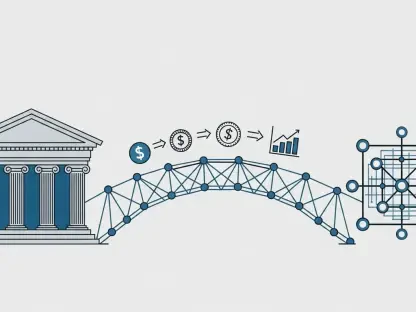What happens when settling a dispute with a powerful government agency means forfeiting the right to speak out against it? This stark reality confronts countless individuals and companies under the U.S. Securities and Exchange Commission’s (SEC) controversial “gag rule,” a policy that silences public criticism after settlements. A recent landmark decision by the 9th U.S. Circuit Court of Appeals has thrust this issue into the spotlight, affirming the rule’s legality while leaving lingering questions about its impact on free speech. This ruling, balancing regulatory power against constitutional rights, strikes at the heart of how justice and expression coexist in today’s financial oversight landscape.
The significance of this decision cannot be overstated. It shapes the boundaries of what defendants can say after resolving disputes with a federal regulator, often in high-stakes cases involving millions in penalties and market integrity. With public trust in government institutions under constant scrutiny, the gag rule’s restriction on open dialogue raises critical concerns about transparency and accountability. This story delves into the origins of the policy, the court’s reasoning, dissenting voices, and the paths forward for those affected, revealing a deeper tension between individual freedoms and administrative control.
A Silent Bargain: Unpacking the SEC’s Contentious Gag Rule
At the core of this debate lies a policy dating back over five decades, where the SEC requires defendants in civil enforcement cases to neither admit nor deny allegations as part of settlement agreements. This condition, often dubbed the “gag rule,” effectively bars them from publicly criticizing the agency’s actions or decisions post-settlement. For many, this feels less like a resolution and more like a forced muzzle, raising questions about whether the price of peace with a regulator is too steep.
The rule’s intent, from the SEC’s perspective, is to streamline enforcement by avoiding prolonged legal battles while maintaining a neutral public narrative. Yet, this neutrality comes at a cost—defendants, whether individuals or corporations, lose the ability to share their side of the story or challenge perceived overreach. In an era where public discourse shapes perceptions of justice, this restriction feels particularly jarring, especially for those who believe their silence protects the regulator more than the public.
Judicial Backing: The 9th Circuit’s Stance on Regulatory Power
In a unanimous 3-0 ruling, the 9th U.S. Circuit Court of Appeals upheld the SEC’s gag rule, dismissing broad claims that it inherently violates First Amendment rights. Circuit Judge Daniel Bress articulated that defendants are not coerced into settlements; they can choose to fight the SEC in court and preserve their freedom to speak publicly. This perspective frames the rule as a voluntary trade-off rather than an outright suppression of speech, emphasizing personal choice in navigating legal disputes.
The court also underscored the SEC’s interest in maintaining flexibility in case resolutions. Settlements, often faster and less costly than litigation, could become less common if the rule were struck down, potentially clogging the judicial system and straining regulatory resources. However, the ruling wasn’t a blanket approval—it left open the possibility that specific applications of the rule might infringe on constitutional protections, hinting at future battles over its scope and fairness.
This nuanced decision has sparked mixed reactions. While it provides the SEC with continued authority to enforce the policy, it also signals to critics that the fight is far from over. The acknowledgment of potential First Amendment issues offers a sliver of hope for those who see the rule as a barrier to honest dialogue about government conduct in financial markets.
Critics Strike Back: Voices Challenging the Silence
Opposition to the ruling has been swift and vocal, with groups like the New Civil Liberties Alliance (NCLA) leading the charge. Senior litigation counsel Peggy Little sharply criticized the court’s deference to the SEC, stating, “A longstanding policy doesn’t excuse unconstitutional overreach.” Her words reflect a broader frustration among defendants who feel coerced into silence under the guise of settlement, and the NCLA has vowed to pursue further appeals to challenge the rule’s legitimacy.
Individual stories add weight to these objections. Take the case of Barry Romeril, former CFO of Xerox, who has long argued that the gag rule prevents him from defending his reputation or critiquing the SEC’s handling of his case. His experience illustrates the personal toll of the policy, where financial resolutions come at the expense of public vindication or accountability for regulatory actions.
Even within the SEC, dissent brews. Commissioner Hester Peirce has publicly opposed the agency’s refusal to revise the rule, arguing earlier this year that no solid evidence supports its necessity. She warned that silencing defendants blocks valid criticism of government practices, eroding public trust at a time when transparency is paramount. These varied voices—from legal advocates to insiders—paint a picture of a policy facing intense scrutiny from all angles.
The Cost of Compliance: How the Rule Shapes Behavior
Beyond legal arguments, the gag rule profoundly influences how defendants approach settlements with the SEC. Many opt to settle not out of guilt but to avoid the staggering costs and risks of prolonged litigation, often involving penalties in the tens of millions. However, this pragmatic choice comes with a hidden burden—losing the right to speak out can damage reputations and hinder efforts to rebuild public or investor confidence.
This dynamic creates a chilling effect, where fear of future SEC reprisals or reopened cases discourages even subtle critique. A study by the Cato Institute found that over 80% of surveyed legal professionals believe such policies deter open discussion about regulatory fairness, stifling debate in an industry already under intense scrutiny. For smaller firms or individual defendants, the inability to counter public narratives shaped by SEC allegations can be particularly devastating, amplifying the rule’s impact beyond mere legal constraints.
The broader implication is a marketplace of ideas skewed toward the regulator’s perspective. When only one side of a dispute can speak freely, the public’s understanding of financial oversight risks becoming one-sided. This imbalance challenges the very principles of accountability that the SEC aims to uphold, leaving many to question whether the rule protects the system or simply those who run it.
Pathways to Change: Strategies for Defendants and Advocates
For those ensnared by the gag rule or advocating for reform, the 9th Circuit’s ruling offers both constraints and opportunities. One approach is to challenge the rule’s application in specific instances—whether before enforcement actions, during settlement approvals, or if the SEC revisits settled matters. The court’s recognition of potential First Amendment violations provides a legal foothold for tailored arguments that could reshape how the policy is enforced.
Another tactic involves amplifying public awareness through collaboration with advocacy groups like the NCLA. By highlighting personal stories of those silenced, such as Romeril’s, reformers can build momentum for policy change outside the courtroom. Public pressure has historically influenced regulatory shifts, and sustained campaigns could push the SEC to reconsider its stance over the coming years, potentially from now through 2027, as scrutiny intensifies.
Finally, defendants facing settlements must weigh the true cost of silence against the burden of litigation. Legal counsel can play a critical role in assessing whether contesting the SEC publicly better serves long-term interests, both personal and systemic. While not every case warrants a fight, strategic resistance in key instances could set precedents that benefit others, gradually chipping away at a rule many deem oppressive. These steps offer a roadmap for navigating the current legal landscape while pushing for a future where speech and settlement aren’t mutually exclusive.
Looking back, the 9th Circuit’s decision to uphold the SEC’s gag rule marked a pivotal moment in the ongoing clash between regulatory authority and individual rights. The ruling, while affirming the policy’s general legality, opened a narrow window for future challenges by acknowledging potential constitutional flaws in specific applications. This delicate balance reflected the judiciary’s caution in dismantling a decades-old practice without concrete evidence of widespread harm. As the debate unfolded, stories of silenced defendants and internal SEC dissent underscored a growing demand for transparency. Moving forward, the focus shifted to actionable strategies—targeted legal challenges, public advocacy, and informed decision-making by defendants became essential tools to ensure that the right to speak wasn’t sacrificed at the altar of regulatory convenience.









